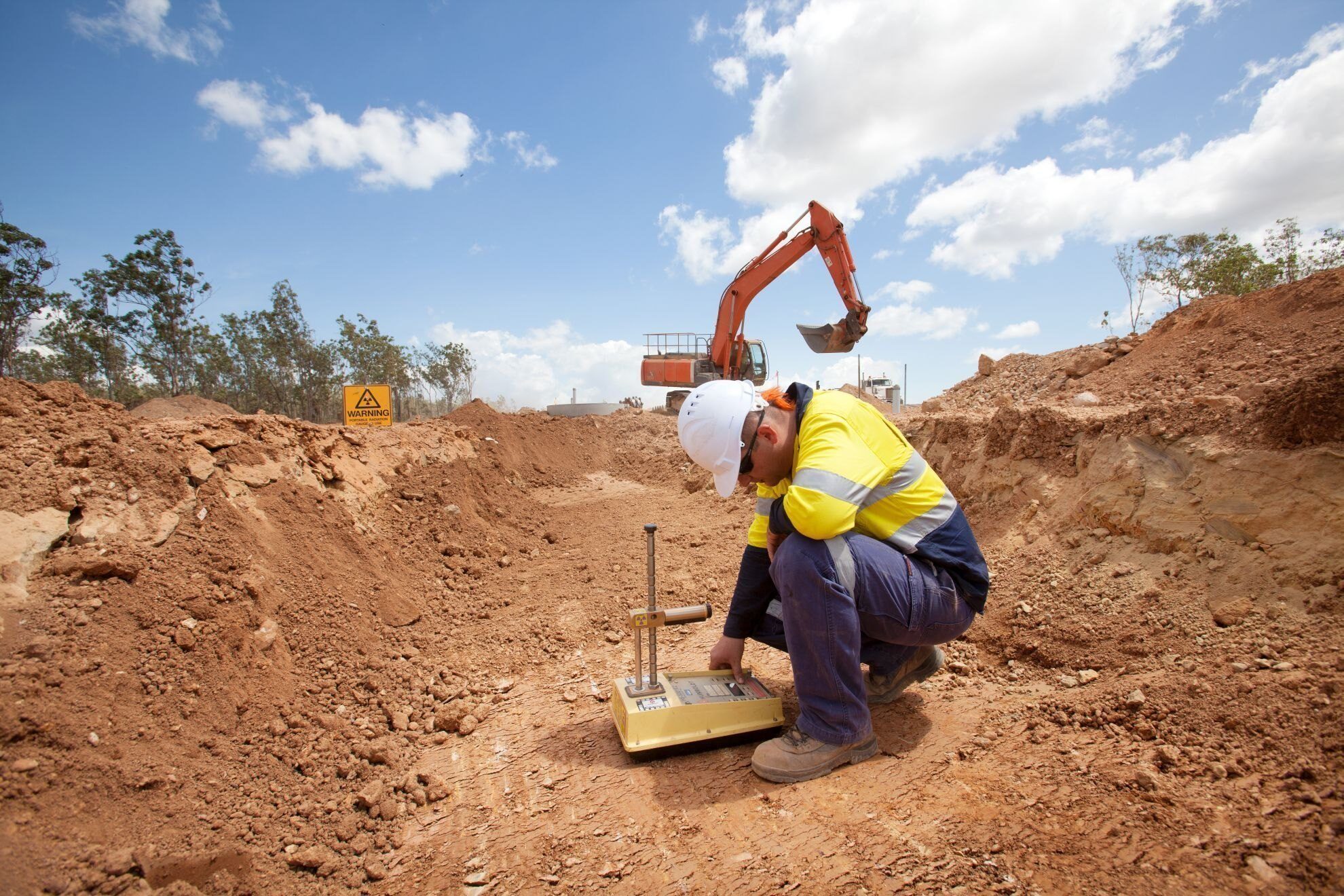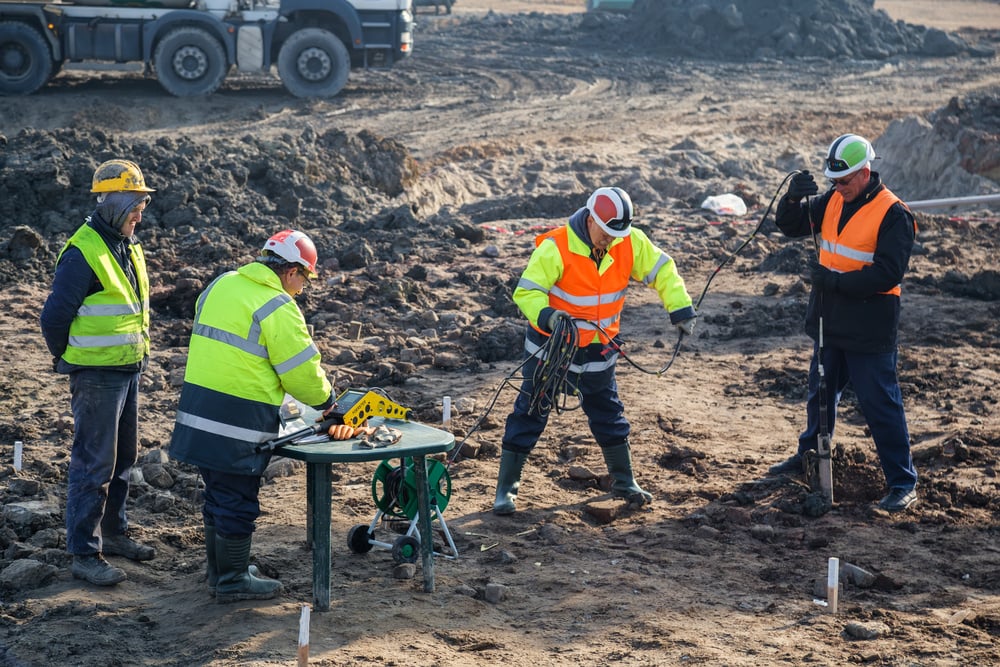Unknown Facts About Geotechnical Engineering For Construction Projects
Unknown Facts About Geotechnical Engineering For Construction Projects
Blog Article
The Buzz on Geotechnical Engineering For Construction Projects
Table of ContentsA Biased View of Geotechnical Engineering For Construction ProjectsFascination About Geotechnical Engineering For Construction ProjectsGeotechnical Engineering For Construction Projects for BeginnersThe 15-Second Trick For Geotechnical Engineering For Construction ProjectsOur Geotechnical Engineering For Construction Projects Ideas
Throughout the investigation, it is crucial to drill at the needed depth and the called for number of holes as per the recommendation of the Canadian Foundation Style criterion. Sometimes, the proprietor could conserve some Geotechnical Investigation cost but finish up investing more than the expected throughout the building and construction price.The duties of the geotechnical consultant include giving product testing for construction support. Geotechnical Engineering for Construction Projects. Geotechnical designers analyse all the field test reports to guarantee that building is taking place as per the job specification. During building, a confirmatory examination for dirt compaction is done on-site to make certain that no future negotiation occurs
After the concrete is put -7 days and 28 days- tests are performed on concrete samples gathered from the website to guarantee that the concrete poured satisfies the style requirement. Asphalt core is taken after the Asphalt is laid and compacted to confirm that it fulfills the layout criterion. All laboratory examination reports are analysed by the Geotechnical Designer to make certain that it meets the project requirements.
Some Known Details About Geotechnical Engineering For Construction Projects

Geotechnical engineering plays an important function in making sure the stability of building projects. Geotechnical engineering is an important branch of civil design that concentrates on understanding the behaviour of planet materials, such as dirt and rock.

For a trusted foundation and a smooth building procedure, depend offer the know-how you require. Get in touch with to obtain expert guidance and geotechnical services customized to your next job.
The Ultimate Guide To Geotechnical Engineering For Construction Projects
When embarking on a land growth project, recognizing the ground below your feet is as essential as the frameworks you plan to develop above it. Our Geotechnical Design group evaluate the ground, guaranteeing it appropriates for the suggested advancement while supplying you with the info called for to satisfy your job objectives.
Geotechnical Design looks at the formation of the ground, as it is the building obstructs for all projects. Where frameworks require to be designed relative to the ground conditions; ground problems (e.g., soft ground) may need strengthening depending on the dimension of the designated structure. Before building, you need to learn about the groundwater, dirt structure, and liquefaction probability of your land.
For websites that are not attached on the regional authority facilities extra website examinations would certainly be needed to offer technological inputs for on-site stormwater and wastewater. We have experienced Geotechnical Engineers based in each office, sustaining your geotechnical demands nationwide. Connect to us to go over exactly how we can support your following job.
These reports are tailored to fulfill the details demands of a project and include style parameters and suggestions for the building of a variety of synthetic structures. Along with supplying consultancy services covering locations such as incline security and load-bearing capabilities for different products, these engineers undertake research and advancement tasks to improve methods, devices, materials understanding and evaluation covering whole lifecycles.
A Biased View of Geotechnical Engineering For Construction Projects

However, rates of pay normally increase as your expertise and skills grow, with standards aiming to a graduate beginning income of in between 18,000 and 28,000 per year in the UK. This climbs to 26,000 to 36,000 with a few years of experience and then reaching 40,000 to 60,000+ for senior, chartered or master designers.
However, with the right application it is feasible to understand the career and gain access to a challenging yet gratifying and essential career. A rock hound would need to retrain to end up being a geotechnical engineer, although there is a lot of cross-over in between both occupations, which might make this much easier - Geotechnical Engineering for Construction Projects. Geologists need to have an understanding of dirts, rocks and other materials from a scientific perspective, while geotechnical designers tale their knowledge of matters such as dirt and rock auto mechanic, geophysics and hydrology and use them to engineering and environmental tasks
When starting out, these designers will have a tendency to deal with her explanation much less complicated projects, constructing up knowledge and experience all set for even more challenging job later. Geotechnical engineers have a tendency to be experts in details areas as they grow in experience, concentrating on specific facilities such as trains, roads or water. These designers likewise work with renewable resource, offshore and onshore oil and gas, nuclear power, and a lot more.
About Geotechnical Engineering For Construction Projects
The time taken to become a geotechnical designer depends on where you are based, where you research study and what degree of education and learning you desire to obtain prior to getting in the work environment. Generally-speaking it takes visit the website 3-4 years to reach the basic requirements to begin a job as a geotechnical designer.
These procedures make it possible for experts to analyze a host of soil auto mechanics including weight, porosity, void-to-solid bit ratio, permeability, compressibility, optimum shear strength, bearing capability and deformations. If the framework needs a deep foundation, engineers will utilize a cone infiltration test to estimate the quantity of skin and end bearing resistance in the subsurface.
When assessing an incline's balance of shear stress and anxiety and shear stamina, or its ability to stand up to and undertake activity, rotational slides and translational slides are typically taken into consideration. Rotational slides fall short along a bent surface, with translational slides taking place on a planar surface. A professional's objective is to identify the conditions at which a slope failure might happen.
Frequently, searchings for recommend that a site's dirt must be treated to enhance its shear stamina, stiffness and permeability prior to design and building. When it comes time to lay out foundation plans, professionals are progressively concentrated try this web-site on sustainability, more especially just how to lower a foundation's carbon impact. One method has actually been to replace 20 percent of a foundation's concrete with fly ash, a waste item from coal fire power plants.
Report this page